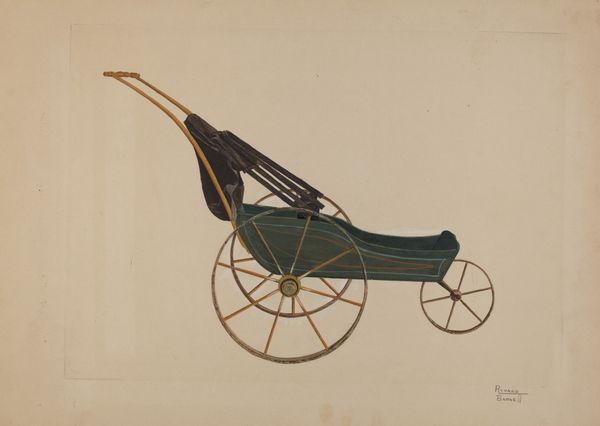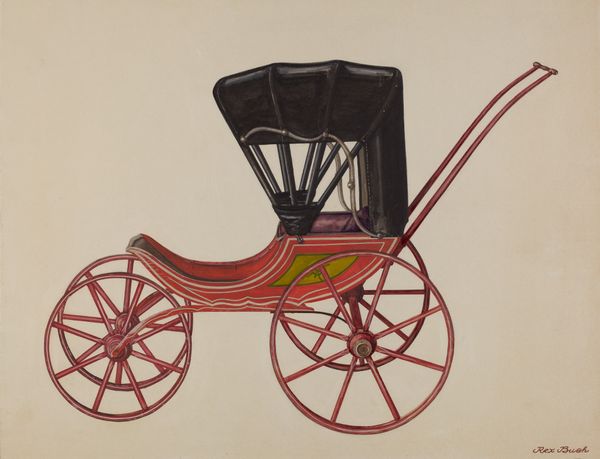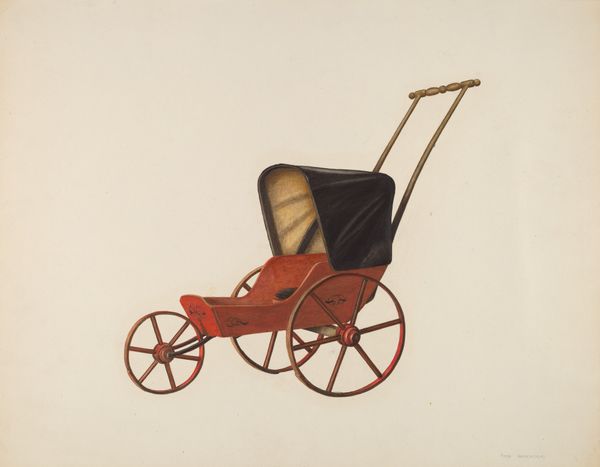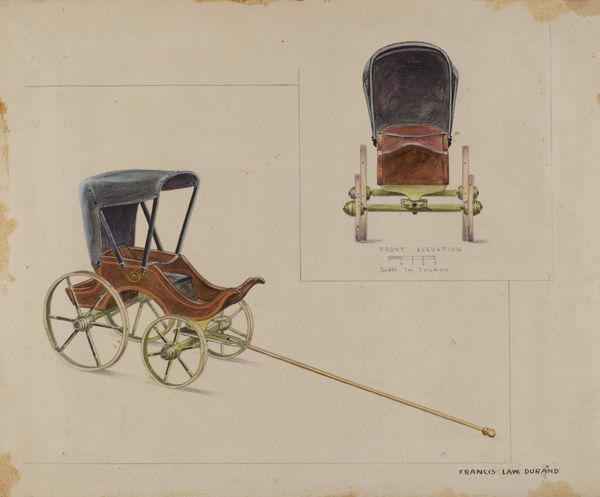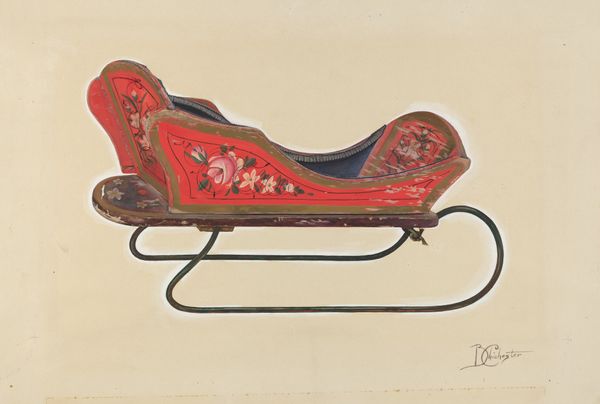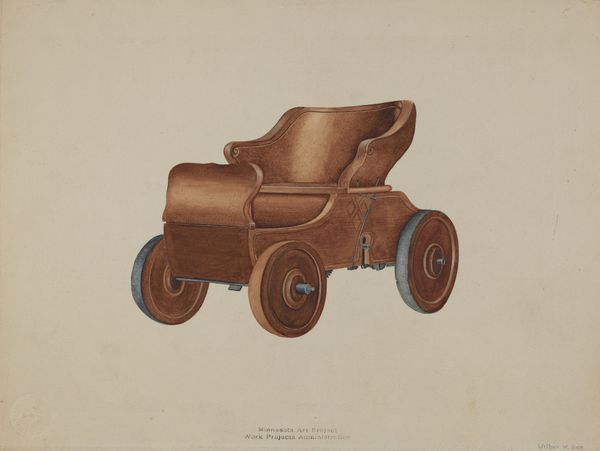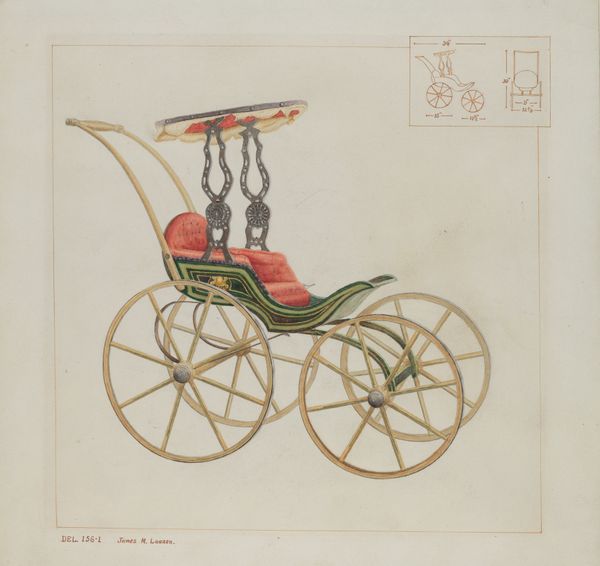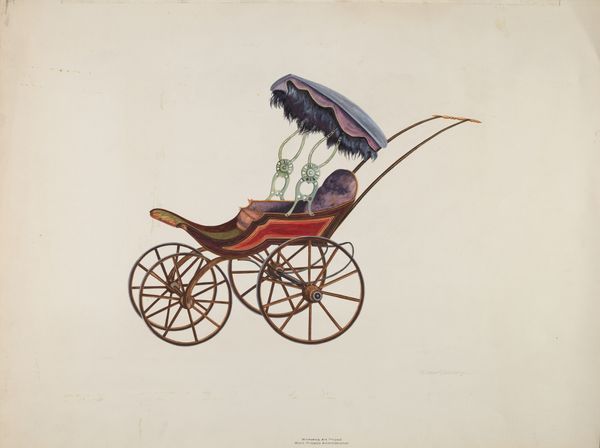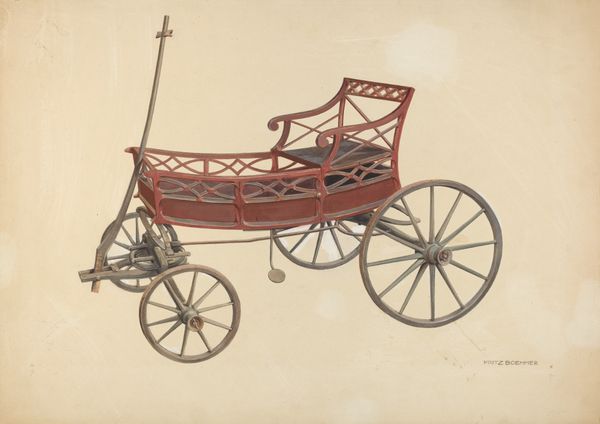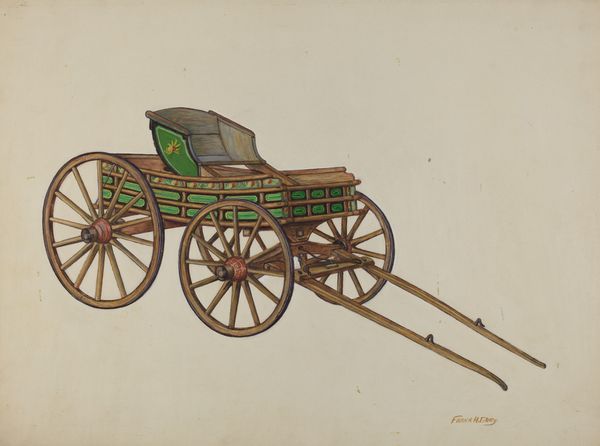
drawing, watercolor
#
drawing
#
oil painting
#
watercolor
#
watercolour illustration
#
watercolor
#
realism
Dimensions: overall: 29.2 x 42.9 cm (11 1/2 x 16 7/8 in.) Original IAD Object: body: 14 2/4" long; 9 1/2" tall; tongue: 11 3/4" long
Copyright: National Gallery of Art: CC0 1.0
Editor: This is Chris Makrenos’ "Doll Cart" from around 1937, rendered in watercolor. It has such a simple, almost folksy quality. What strikes me most is the geometry of it. The curves of the cart's body against the rigid straight lines of the handle, and all those perfect circles of the wheels. What do you see when you look at it? Curator: The artist's control of line is, indeed, masterful. Observe how the watercolor, typically associated with fluidity, here serves to define extremely precise edges, almost diagrammatic in their clarity. Notice, too, how light and shadow interact on the painted surface. Does this create the sense of depth you might expect? Editor: I guess not. It's there, but subtly. I'd say the lighting contributes to the flattened effect; it's not strongly directional. The whole composition feels rather two-dimensional. Curator: Precisely. And the limited palette—earth tones predominating—further reinforces the deliberate eschewal of illusionistic depth. Is this limitation arbitrary, or could it be a statement? Editor: Perhaps the artist aimed to emphasize form and structure rather than create a believable representation? By simplifying the colour and minimizing strong shadows, the artwork encourages us to examine the underlying shapes. Curator: An astute observation. Furthermore, contemplate the tension inherent in the subject matter: a child's toy, traditionally an object of play and imagination, meticulously rendered with almost scientific precision. Does this contrast suggest a deeper inquiry? Editor: So by dissecting the cart to its basic visual components, it feels more abstract. Focusing less on ‘doll cart’ and more on colour, form, line. Curator: Indeed. We must analyze beyond surface representation and consider the artwork as a constructed entity—an arrangement of shapes, tones, and lines that exists independently of its ostensible subject. Editor: That's such an interesting perspective. I had focused on what the image represented and overlooked the art of its construction. Thank you for highlighting that!
Comments
No comments
Be the first to comment and join the conversation on the ultimate creative platform.
